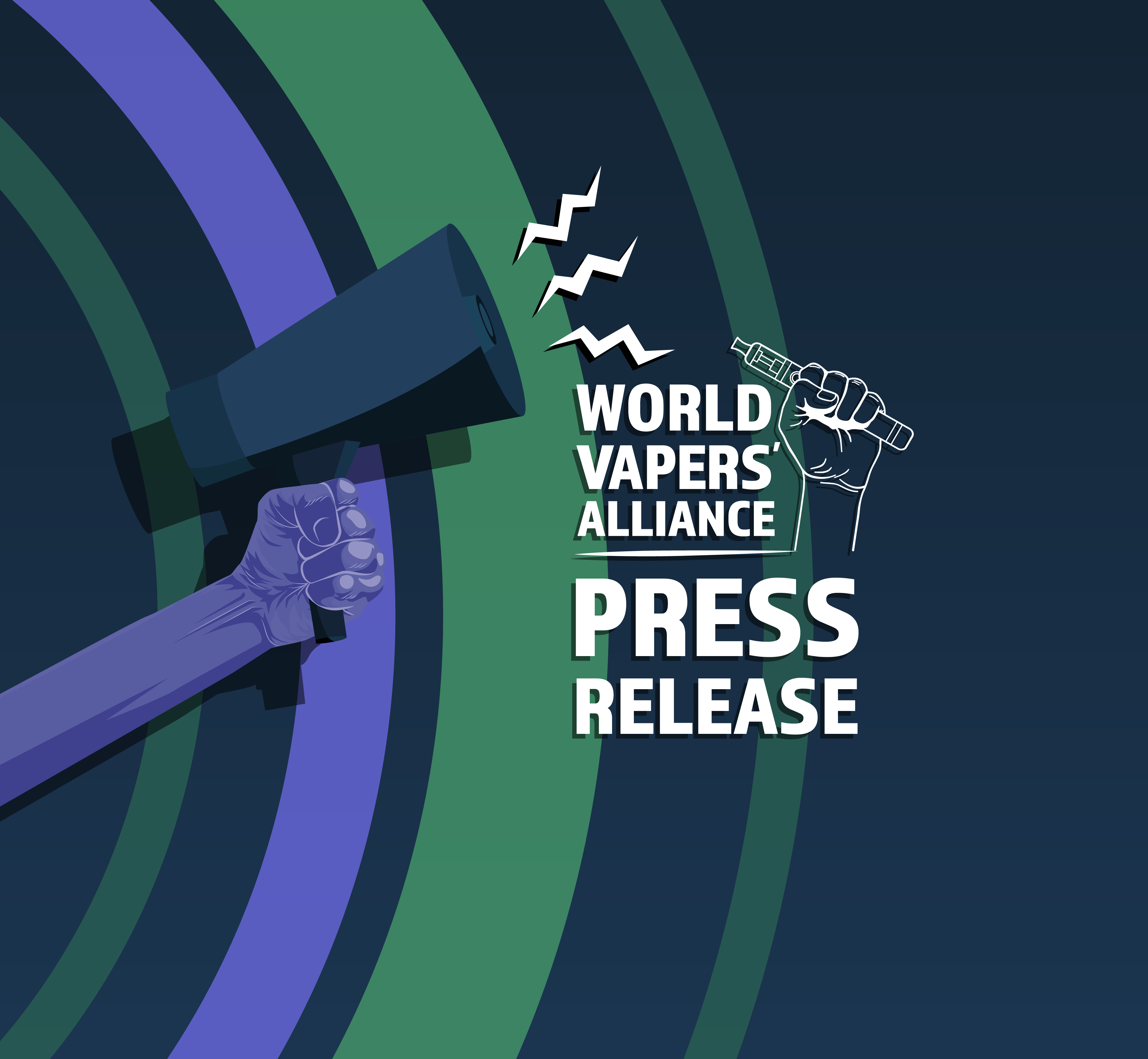Mi, kao WVA, upravo smo podnijeli sljedeću izjavu na konzultacije EU o duhanu i regulatornom okviru zajedno s našim “Direktiva o proizvodima za vaping”".
Ako i vi želite doprinijeti, kliknite ovdje.
ETHRA je izradila vodič o tome kako se snaći u procesu konzultacija ovdje.
—
Poštovane dame i gospodo,
Kao organizacija potrošača koja predstavlja desetke tisuća korisnika e-cigareta diljem svijeta, cijenimo priliku da pružimo povratne informacije o trenutnom regulatornom okviru EU za duhan i nikotin - Direktivi o duhanskim proizvodima (TPD). Nažalost, s našeg gledišta, većina pitanja je pristrana, obmanjujuća, nemoguće je odgovoriti na njih ili su otvorena za tumačenje. Čini se da Europska komisija ovim ispitivanjem želi opravdati svoj neprijateljski stav prema smanjenju štete.
Ovo je još jedna propuštena prilika za Komisiju da konačno otvori iskren i znanstveno utemeljen dijalog sa SVIM dionicima. Smanjenje štete mora biti ključni element revizije Direktive o duhanskim proizvodima ako EU želi postići svoj cilj bez dima do 2040. godine.
Samo je jedna zemlja u EU na putu da ostvari taj cilj: Švedska. Zapravo, Švedska će ove godine već postići cilj zabrane pušenja, a ironično je da je to jedina zemlja s određenom pravnom fleksibilnošću prema DTO-u. Vrijeme je da se u potpunosti prihvati smanjenje štete u EU.
Svjetski savez korisnika elektronskih cigareta (World Vapers Alliance) pružio je “Direktivu o proizvodima za elektronske cigarete” (vidi drugi prilog) mogući put naprijed za postizanje ciljeva EU-a za zabranu pušenja.
U nastavku želimo pokazati neke primjere pitanja koja smatramo pristranima ili otvorenima za interpretaciju.
- Kakvo je vaše mišljenje o politikama kontrole duhana u EU?
Naravno, vidjeli smo poboljšanje javnog zdravstva unutar EU. Ipak, što se tiče smanjenja pušenja i bolesti povezanih s pušenjem, ovo poboljšanje je posljedica inovacija i usvajanje manje štetnih alternativa cigaretama - ne zbog propisa EU. Trenutno su propisi EU kamen spoticanja, a ne rješenje za smanjenje stope pušenja.
- Švedska ima najniža stopa pušenja u EU i jedina je zemlja na putu da ostvari cilj EU-a za bezpuško zdravlje.
- U posljednjem desetljeću, stopa pušenja u Švedskoj odbijeno od strane 55%.
- Prosječna stopa pušenja u ostatku EU-a je više od 3,5 puta veća
- Smrti povezane s pušenjem su 22% niži u Švedskoj nego u prosjeku EU
Stoga EU mora slijediti put Švedske sa svim nadolazećim propisima. U potpunosti prihvatiti smanjenje štete i uvesti regulaciju temeljenu na riziku. Vaping, nikotinske vrećice, snus i slični proizvodi nisu isto što i pušenje i ne smiju se tretirati isto!
- Uzimajući u obzir sljedeće odredbe Direktive o duhanskim proizvodima, jesu li bile primjerene za osiguranje visoke razine zaštite ljudskog zdravlja u EU?
Određivanje maksimalne koncentracije nikotina za tekućine koje sadrže nikotin. Reguliranje maksimalnih volumena spremnika za ponovno punjenje i uložaka/spremnika za jednokratnu upotrebu
(Mogućnosti odgovora kreću se od vrlo adekvatnog do vrlo neadekvatnog.)
Maksimalna koncentracija nikotina za vaping sprječava posebno teške pušače - kojima su potrebne visoke koncentracije nikotina - da pređu na vaping. Kao takva, nije adekvatna za zaštitu ljudskog zdravlja. No bojimo se da će Komisija sve odgovore koji kažu da je neadekvatan protumačiti kao “trebaju nam niže razine nikotina”. Ovo nije nepristran oblik ispitivanja.
Isto vrijedi i za maksimalne količine spremnika. Ograničenja su štetna za javno zdravlje i okoliš. Ali ako kažemo neadekvatna, Komisija može protumačiti odgovor kao da su nam potrebne manje količine.
Ova vrsta pitanja ponavlja se kroz cijeli upitnik. Stoga Komisija može svako pitanje na koje smo odgovorili s “Ne znam” smatrati obmanjujućim, pristranim ili previše otvorenim za tumačenje.
- Jesu li sljedeće odredbe Direktive o duhanskim proizvodima mogle odgovoriti na nedavna tržišna zbivanja?
Ovdje nije ni jasno što se podrazumijeva pod “rješavanjem”. S obzirom na neprijateljski stav Komisije prema smanjenju štete, to se mora tumačiti kao uklanjanje tih proizvoda, što ne poboljšava javno zdravlje.
- U kojoj mjeri mislite da će se upotreba sljedećih proizvoda nastaviti povećavati u sljedećih 10 godina?
To ovisi o budućim propisima EU. Nadamo se sličnim događajima u Švedskoj i Ujedinjenom Kraljevstvu, gdje stope pušenja naglo padaju, a pušači masovno prelaze na manje štetne alternative. Suzdržavamo se od pitanja jer se bojimo da će Europska komisija predviđanje o povećanju upotrebe proizvoda za smanjenje štete protumačiti kao potrebu za strožom regulacijom.
- Koji od sljedećih proizvoda mislite da najviše privlače mlade ljude? (Više opcija)
Nadamo se da neće biti cigareta, ali čini se da ovo pitanje ima za cilj stvoriti dojam da bi problem bile manje štetne alternative.
- Što se tiče članka 7(12) Direktive o duhanskim proizvodima, smatrate li da je dopuštanje izuzeća novih duhanskih proizvoda od zabrane karakterističnih aroma učinilo te proizvode privlačnijima mladima?
Arome su ključne za njegov uspjeh kao pomoći za prestanak pušenja za odrasle. Pa zašto u potpunosti zanemariti milijune odraslih pušača kada su u pitanju arome? Čini se da je Komisija ponovno zainteresirana samo za to da proizvodi za smanjenje štete izgledaju opasni za javno zdravlje, dok je istina upravo suprotna.
- Jesu li relevantne odredbe Direktive o duhanskim proizvodima dovoljno fleksibilne da bi se riješili sljedeći problemi?
Opet, nema definicije "adrese".
- Jesu li sljedeće odredbe TAD-a i TPD-a članka 20(5) bile učinkovite u osiguravanju visoke razine zaštite ljudskog zdravlja u EU?
(Mogućnosti odgovora kreću se od “nimalo” do “da, bili su učinkoviti”)
Isti problem opet. Većina odredbi bila je neučinkovita, ali bojimo se da će se, ako odaberemo ovu opciju kao odgovor, protumačiti kao nedovoljno stroga. Potrebna nam je diferencijacija prema profilima rizika različitih proizvoda, a ne samo veća regulacija.
- Koji prodajni kanal smatrate problematičnim za propise o provjeri dobi?
Vrlo jednostavno pitanje gdje možete birati samo proizvode. Ako je jedna od prodajnih točaka problematična za jedan proizvod, ne bi li bila problematična i za ostale? Ovo pitanje nema puno smisla.
- Smatrate li da je prodaja sljedećih kategorija proizvoda trebala biti zabranjena na sljedećim lokacijama?
Isti problem. Nema mogućnosti za nijansirane odgovore ili opcije ako ste protiv zabrana prodaje.
- Mislite li da je vidljivost sljedećih proizvoda na prodajnim mjestima trebala biti ograničena, ako već nije?
Nema mogućnosti odabira manjih ograničenja za manje štetne proizvode. Dakle, svi zagovornici smanjenja štete ne mogu odgovoriti na ovo pitanje.
Sveukupno, zapanjujućih 117 pitanja od 201 je u tom smjeru i neće dovesti do nepristranog rezultata konzultacija.
To se razlikuje od načina na koji očekujemo da će se Komisija angažirati s javnošću. Cijelo savjetovanje ostavlja nam dojam da Komisija želi odobrenje za svoje neprijateljstvo prema proizvodima za smanjenje štete. Nadamo se da će preispitati ovaj pristup jer zemlje poput Ujedinjenog Kraljevstva i Švedske dokazuju da otvorena i potrošačima prilagođena politika prema alternativnim nikotinskim proizvodima može postići niže stope pušenja. Ciljevi zabrane pušenja mogu se postići ako vlade uče od najboljih i najučinkovitijih nacija. Zemlje s relativno visokim stupnjem prihvaćanja alternativnih nikotinskih proizvoda, kao što su vaping, grijani duhan, nikotinske vrećice i snus, općenito su u stanju brže smanjiti stope pušenja od drugih. Vrijeme je da učimo od najboljih.





Jedan odgovor